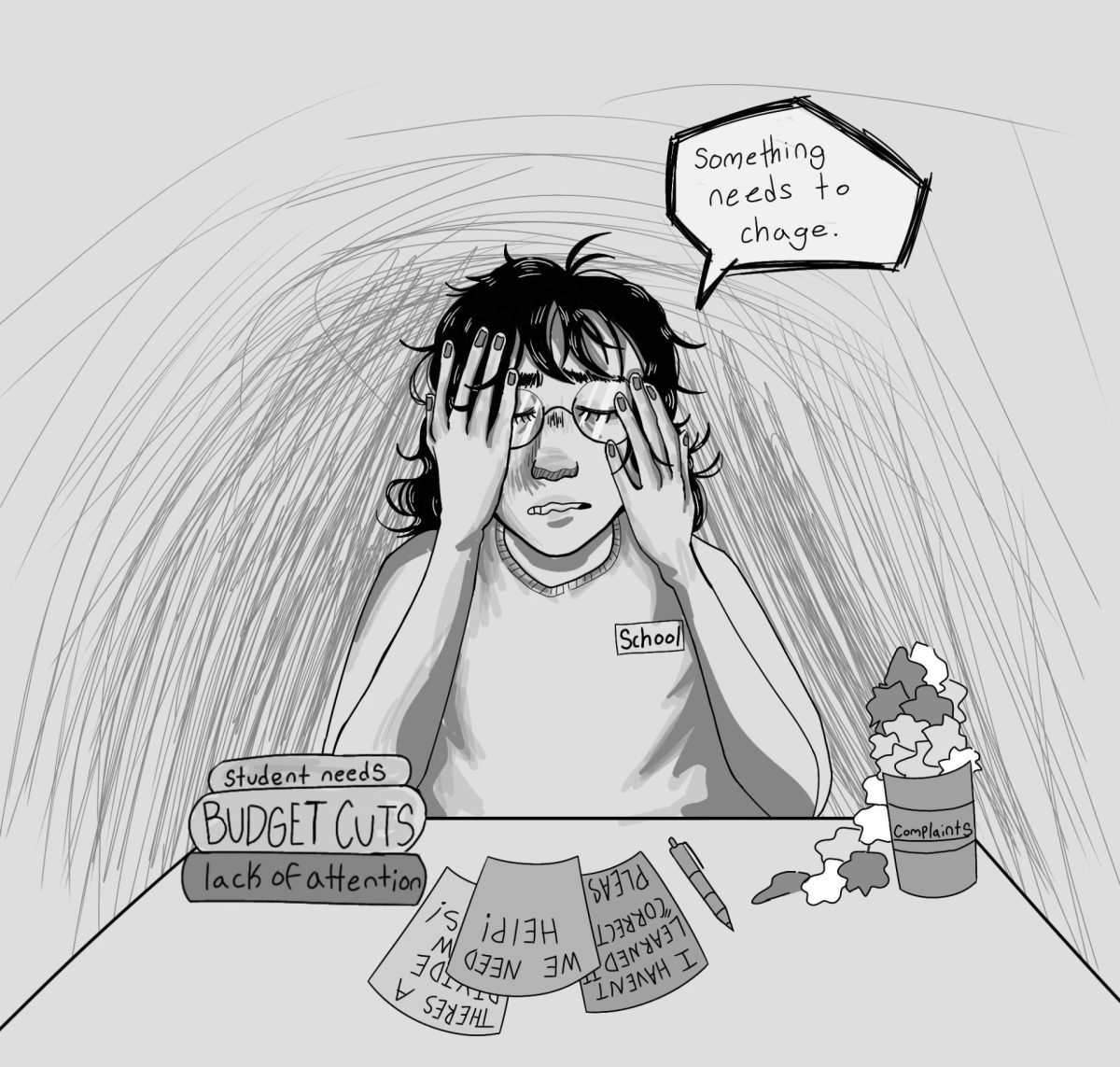For the past five years, Seattle has seen an increase in unusual snowy weather conditions. Despite the obvious indications, this could be caused by the growing climate change issue, which has had an effect all around the planet.
Seattle is known for its rainy season all year around, but as of the past decade, the average amount of snowfall has increased significantly. In the February of 2019, the city received 14.1 inches in the first 10 days of the month, giving it a record of the coldest and snowiest February in Seattle in 30 years. On Feb. 13, 2021, Seattle recorded its snowiest single day in 52 years.
“I don’t enjoy it, it makes things difficult,” freshman Marisa Henriques said. “The snow is pretty annoying and it doesn’t melt fast enough.”
A possible cause for the increase in flurries is one that has threatened the planet for many years. Climate change, the long term fluctuation of the planet’s temperatures and weather patterns has proven to be an increasingly serious problem, soon to be irreversible.
The climate change impact refers to the increase in global temperature, which has been raised about one degree Fahrenheit over the past 100 years. Although this seems like an objectively small number, the overall impact and trends it predicts could be detrimental.
Global temperatures began to rise around 1760, during the beginning of the Industrial Revolution, which marked the start of the burning of fossil fuels. Fossil fuels, fuels such as oil, coal and natural gas, are energy sources that were formed from organic matter deep underground, and must be dug up or mined in some way.
This form of non-renewable energy, energy that cannot be created again, became popularized to a point where it was used for most energy sources, and is still used continuously today.
Most fossil fuels involve digging up coal and oils in order to power everyday things, which includes cars, heat, electricity and lights.
Greenhouse gases are gases emitted into Earth’s atmosphere, such as carbon dioxide, methane, and nitrous oxide.
These chemicals have been, and continue to be, emitted into the Earth’s atmosphere, now more prominent in the air than anytime within the past 800,000 years. Fossil fuels have been the main contributor for Greenhouse gas emissions over any other human activity.
When carbon dioxide molecules, the main greenhouse gas emission, are released into the atmosphere, the atoms absorb the heat, trapping it inside and thus trapping heat in the air.
Over the past century, climate change has increased the global temperature by 1.8 degrees Fahrenheit. This global temperature increase can largely impact the risk of natural disasters and other environmental disasters.
Global sea level has averaged at about an eight to nine-inch increase since 1880, and in 2021 the sea level set a record high of 97 millimeters (3.8 inches). These increases in sea level have set us at a higher risk for natural disasters.
Nuisance flooding, which is more frequent high tide flooding due to an increase in sea levels, is likely to increase along with deadly destructive storm surges, leading hurricanes more inland instead of on the coast, some predicted to be as rampant as Hurricane Katrina, Hurricane Michael, and Hurricane Irma.
The predicted sea level rising in 2100 is at a low of 0.5 of an inch and a high of around seven inches.
The melting of ice and snow around the globe has contributed to the ocean rising, and will only continue to do so.
Since 1992, the ice sheets that cover Greenland and Antarctica have decreased by 100 billion metric tons every year. The amount of snow lost between 1992 and 2018 is enough to increase ocean levels by seven-tenths of an inch.
Between 1972 and 2020, the amount of snow covering in North America has decreased by 1,870 square miles per year. NASA’s satellite observations have also observed a severe decrease in snow cover within the past 5 decades.
Though Seattle is ranked second most likely not affected by climate change, the impact can be seen through the differing weather patterns and trends in air quality.
Scientists predict severe sea level rise, or SLR, in Seattle by 2050. This could mean monthly high tides, referred to as the Mean Higher High Water, or MHHW, 2 feet higher than that of today’s average. Storm surges could prove to be an even bigger issue, possibly averaging up to 4 feet higher than today’s MHHW.
Lately Seattle has not only seen freezing temperatures, but also a big increase in heat and droughts. The average Seattle temperature for June through August currently has a high of around 72 degrees Fahrenheit and low of 55 degrees Fahrenheit. Last year in June of 2022 the city saw a high of 108 degrees Fahrenheit, 17 degrees higher than the daily record.
“I do have a lot of questions and concerns about climate change,” freshman Daisy Lewis’Gist said. “The summers are reaching 100 degrees, it’s not normal.”
Many people have expressed concern over the subject, and what they can do about it. Many solutions, while effective, are not realistic currently, such as cutting out all use of fossil fuels. Instead, there are smaller but still productive choices people can make in their everyday routines to lessen climate change and its damage.
Taking public transit or walking when possible will always do well to reduce each individual’s carbon footprint, as well as reusing plastic and clothing.
Another effective course of action is voting to promote decisions and choices beneficial to the planet. Politicians voted into office hold a lot of power when it comes to the laws put in place, and these decisions are what will truly make the biggest difference in the long run.










